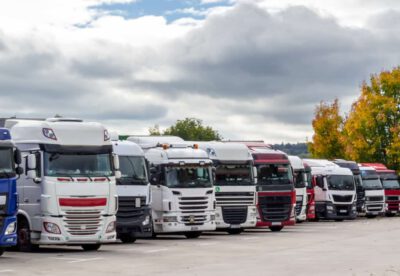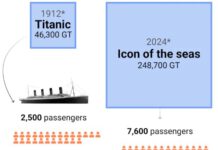
Motorway parking lot near Kreuzlingen/Konstanz, Switzerland
© JoachimKohler-HB (CC BY-SA 4.0 Deed)
The Parliament voted to give lorry manufacturers more design space for the front end of the cab, allowing a more streamlined nose. Some of the extra cab space has to be used to get rid of blind spots, include a crumple zone and to make sure pedestrians and cyclists are not knocked underneath the wheels in a collision. Lorry makers will have the possibility to improve designs straight away but Parliament wants these life-saving features to become mandatory for all new lorries by 2022. Lorries currently have a dreadful safety record: every year 15% of all fatal collisions in Europe – around 4,200 deaths – involve lorries.
Jeannot Mersch, president of the European Federation of Road Traffic Victims, said: “With today’s vote the European Parliament has taken citizens’ safety to heart. Thousands of lives are sadly lost and many more victims are severely injured in lorry crashes every year. Rounded, streamlined lorry cabs could help avoid hundreds of these deaths and injuries. The EU governments have a moral obligation to embrace this hugely beneficial decision. Weakening, delaying or blocking this decision would be unforgivable.”
A rounder lorry front along with rear flaps could also improve fuel economy by up to 7-10%, which at today’s diesel prices would save hauliers approx. €3,000 per vehicle per year. For the first time, Parliament also called for the introduction of fuel efficiency standards for lorries.
Changes to lorry cabs would make Europe’s roads safer for pedestrians and cyclists, yet lorry makers oppose these life-saving improvements. Some lorry makers are lobbying for new designs to be prohibited until 2025 to safeguard what they call ‘competitive neutrality’, a nice way of saying they want to prevent innovative competitors from being the first to make better lorries. Other manufacturers such as Scania welcome the extra cab space but reject key safety standards such as improved direct vision for drivers.
Member states, represented by national transport ministers, will now negotiate with the Parliament on implementation dates of safer lorries, and whether they should be mandatory or optional from 2022.
William Todts, clean vehicles officer at Transport & Environment (T&E), said: “The representatives of Europe’s citizens have openly voted for safer, cleaner lorries, a decision that will reduce road deaths and kick-start progress on lorry CO2 emissions after 20 years of stagnation. It would be unacceptable for EU governments to roadblock life-saving lorry changes in backroom Council deals, as this would only lead to more avoidable road deaths.”
On the controversial issue of ‘megatrucks’ [4], MEPs rejected the Commission’s proposal to allow the cross-border use of longer lorries. Instead, MEPs demand that the Commission properly assesses the impact of wider megatrucks use and report back to Parliament in 2016.
Three quarters of goods in the EU are carried on Europe’s roads by lorries. Whilst they are only 3 percent of vehicles, lorries account for 25 percent of road transport CO2 emissions in Europe. Over the past 20 years the fuel efficiency of lorries has hardly improved.
European Federation for Transport and Environment AISBL
www.transportenvironment.org










